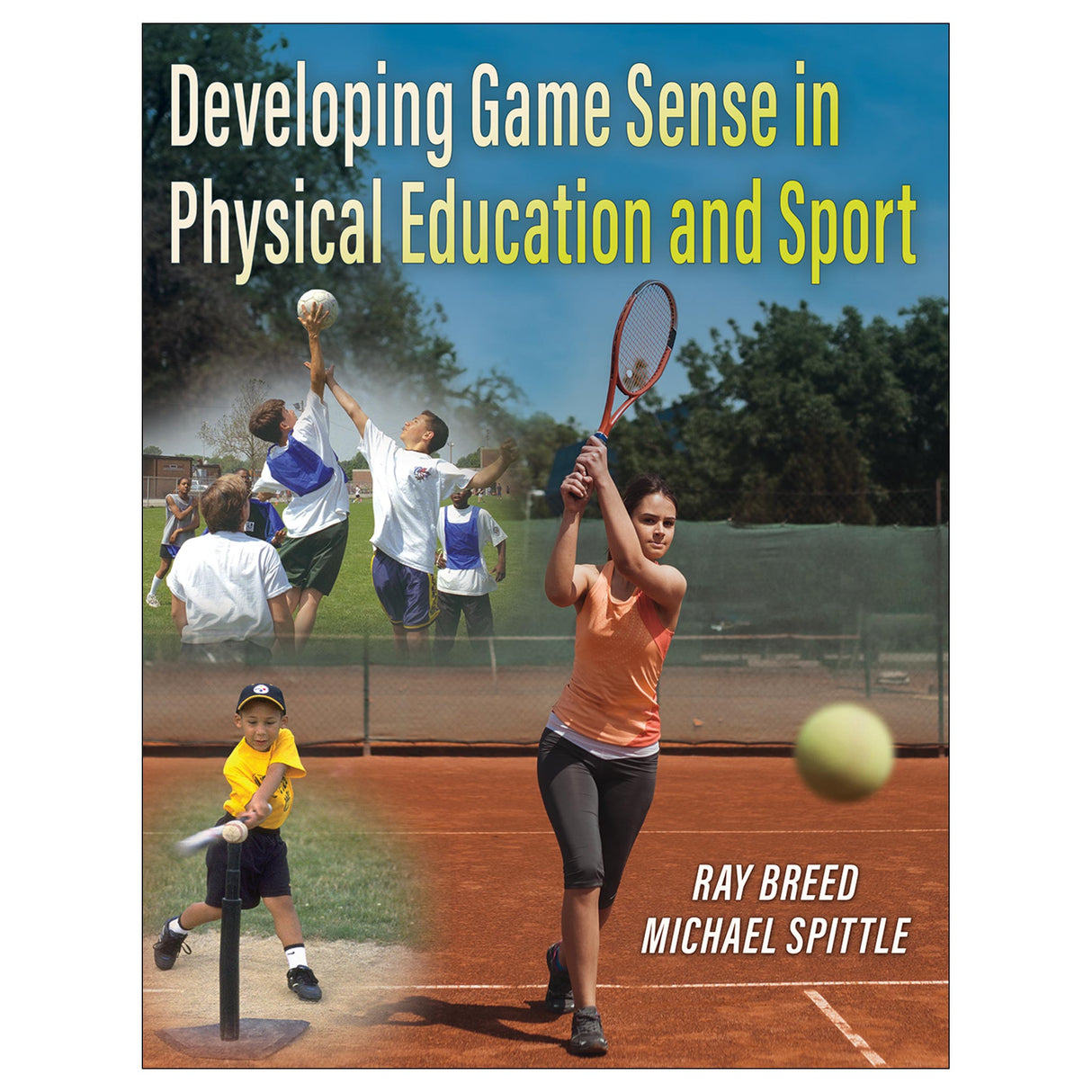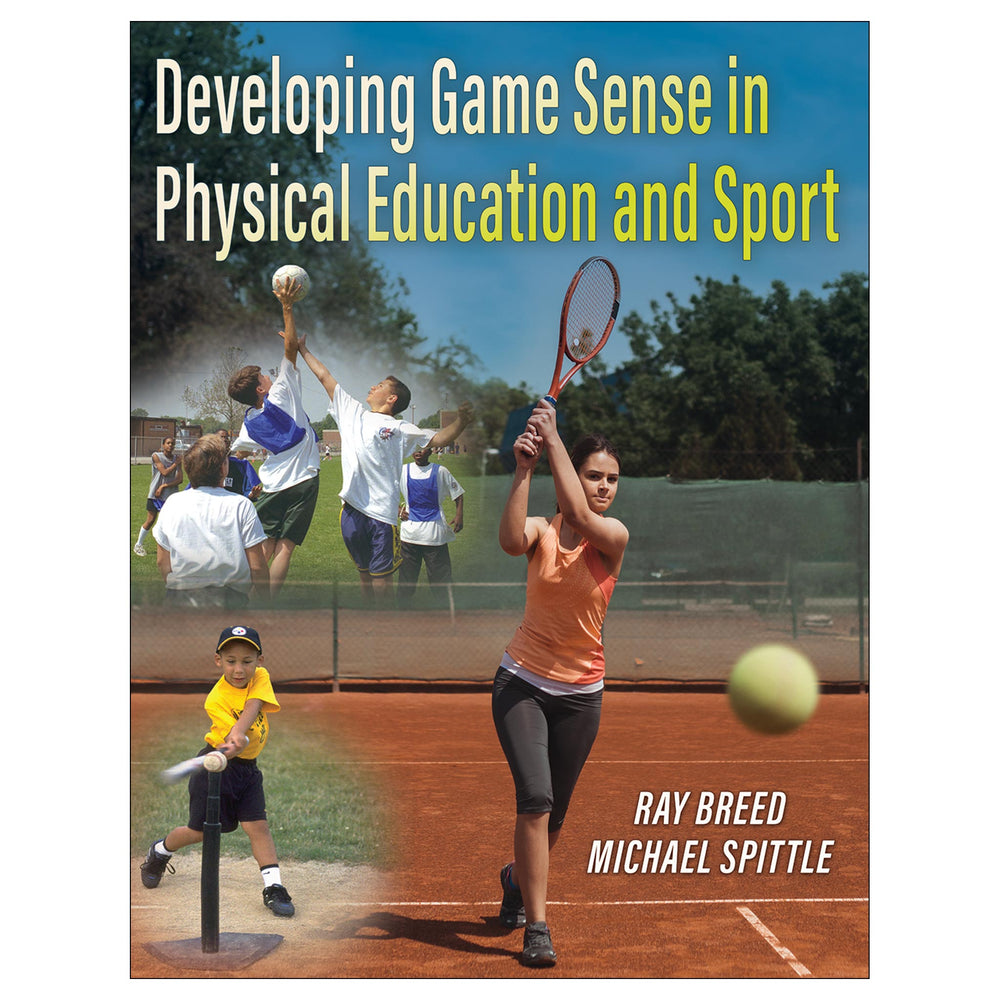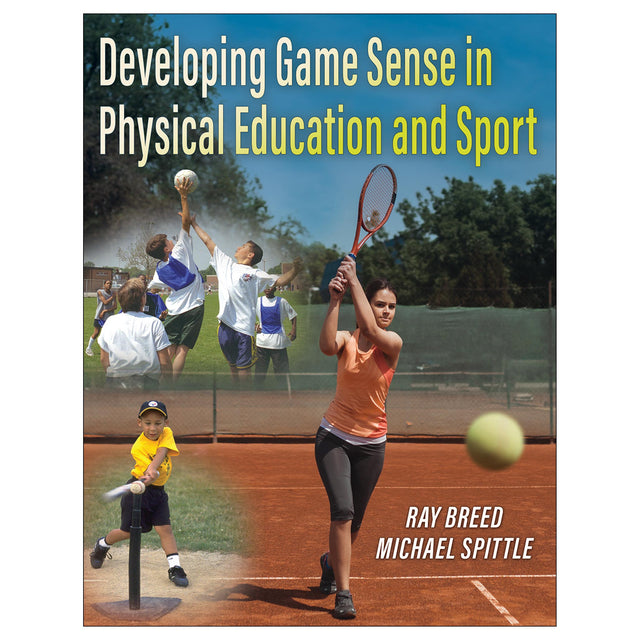Paperback
Developing Game Sense in Physical Education and Sport
Author: Ray Breed, Michael Spittle
$56.00 USD
Unit price
/
Unavailable
Paperback
$56.00 USD
$56.00 USD
Paperback
Authors Ray Breed and Michael Spittle, long recognized as experts in the game sense model and teaching games for understanding approach, have created a complete resource for physical educators and coaches of games and team sports.
Their new book, Developing Game Sense in Physical Education and Sport, provides both the theoretical foundation and the practical application that teachers and coaches need to confidently teach their students and athletes the skills and game sense they need to successfully compete in games and sports.
This text, inspired by the authors’ previous book, Developing Game Sense Through Tactical Learning, offers new material since the publication of that 2011 book, particularly in relation to curriculum, assessment, and physical literacy. “Our version of a game sense model has been modified over time and adjusted to meet the changing needs and requirements of learners and programs,” Breed says. “This book is an updated and improved variation of our original book, and it will assist teachers and coaches in integrating game sense into their sessions and curricula.”
Through Developing Game Sense in Physical Education and Sport, teachers and coaches will be able to do the following:
Developing Game Sense in Physical Education and Sport takes into account regional differences in the game sense model and teaching games for understanding approach. Its organization will facilitate users’ ready application of the material. The text first provides an overview and theoretical framework of the concepts of skill, skill development, game sense, and assessment. It then goes on to explore the links between fundamental motor skills, game sense, and physical literacy. Later chapters offer thematic unit and lesson plans as well as assessment ideas. Practical resources, game ideas and descriptions, and assessment ideas are supplied, along with the practical application of game sense, teaching for skill transfer, structuring games, developing questioning techniques, and organizing sessions.
Developing Game Sense in Physical Education and Sport will allow coaches and teachers to develop the tactical, technical, and strategic skills their athletes and students need in game contexts. Coaches and teachers will also be able to help learners develop personal, social, and relationship skills. As a result, learners will be able to more effectively participate in, and enjoy, team games.
Their new book, Developing Game Sense in Physical Education and Sport, provides both the theoretical foundation and the practical application that teachers and coaches need to confidently teach their students and athletes the skills and game sense they need to successfully compete in games and sports.
This text, inspired by the authors’ previous book, Developing Game Sense Through Tactical Learning, offers new material since the publication of that 2011 book, particularly in relation to curriculum, assessment, and physical literacy. “Our version of a game sense model has been modified over time and adjusted to meet the changing needs and requirements of learners and programs,” Breed says. “This book is an updated and improved variation of our original book, and it will assist teachers and coaches in integrating game sense into their sessions and curricula.”
Through Developing Game Sense in Physical Education and Sport, teachers and coaches will be able to do the following:
- Provide a logical sequence and step-by-step instructions for maximal learning, skill transfer, and game skill development
- Accelerate learning by linking technical, tactical, and strategic similarities in three thematic game categories (There are 19 invasion games, 13 striking and fielding games, and 14 net and wall games.)
- Save preparation and planning time by using the extensive planning and game implementation resources
- Set up games with ease and effectively relate game sense concepts by following the 90 illustrations and diagrams created for those purposes
Developing Game Sense in Physical Education and Sport takes into account regional differences in the game sense model and teaching games for understanding approach. Its organization will facilitate users’ ready application of the material. The text first provides an overview and theoretical framework of the concepts of skill, skill development, game sense, and assessment. It then goes on to explore the links between fundamental motor skills, game sense, and physical literacy. Later chapters offer thematic unit and lesson plans as well as assessment ideas. Practical resources, game ideas and descriptions, and assessment ideas are supplied, along with the practical application of game sense, teaching for skill transfer, structuring games, developing questioning techniques, and organizing sessions.
Developing Game Sense in Physical Education and Sport will allow coaches and teachers to develop the tactical, technical, and strategic skills their athletes and students need in game contexts. Coaches and teachers will also be able to help learners develop personal, social, and relationship skills. As a result, learners will be able to more effectively participate in, and enjoy, team games.
Audience
Text for undergraduate courses in teaching games. Reference for practicing physical educators and coaches. Chapter 1. Developing Skill in Games
Games for Skill Learning
Types of Skill
Applying Skills in Games
Pedagogical Methods in Games
Fundamental Movement Skills and Game Sense
Summary
Chapter 2. Motor Control, Skill Acquisition and Pedagogy
Motor Control Principles
Skill Acquisition Principles
Pedagogy and Game Sense
Summary
Chapter 3. The Game Sense Model
How Does Game Sense Work?
Our Game Sense Model
Applying the Game Sense Model
The Process of Teaching and Coaching Game Sense
Using Game Sense and Dynamic Systems Approaches in Coaching Sport
Summary
Chapter 4. Developing Physical Literacy and Fundamental Movement Skills
Physical Literacy
Developing Fundamental Movement Skills
Summary
Chapter 5. Game Sense Outcomes and Curriculum in Physical Education and Sport
Curriculum Frameworks
Game Sense in Curriculum Frameworks
Applying Game Sense Learning Outcomes to Coaching Sport
Summary
Chapter 6. A Thematic Approach to Teaching Game Sense
Thematic Game Categories
Introducing a Thematic Physical Education Curriculum
Moving From a Traditional to a Thematic Physical Education Curriculum
Summary
Chapter 7. Invasion Games
What Is an Invasion Game?
Planning to Teach or Coach Invasion Games
Teaching Strategies for Maximising Learning
Applying the Game Sense Model to Invasion Games
Game Descriptions
Chapter 8. Invasion Games: Unit Plans
Invasion Games: Unit 1
Introduction
Learning Outcomes
Overview of Unit Plan
Invasion Games: Unit 1 Sequence
Session Plans
Invasion Games: Unit 1 Assessment Rubric
Invasion Games: Unit 2
Introduction
Learning Outcomes
Overview of Unit Plan
Invasion Games: Unit 2 Sequence
Session Plans
Invasion Games: Unit 2 Assessment Rubric
Chapter 9. Striking and Fielding Games
What Are Striking and Fielding Games?
Planning to Teach or Coach Striking and Fielding Games
Teaching Strategies for Maximising Learning
Applying the Game Sense Model to Striking and Fielding Games
Game Descriptions
Chapter 10. Striking and Fielding Games: Unit Plans
Striking and Fielding Games: Unit 1
Introduction
Learning Outcomes
Overview of Unit Plan
Striking and Fielding Games: Unit 1 Sequence
Session Plans
Striking and Fielding Games: Unit 1 Assessment Rubric
Striking and Fielding Games: Unit 2
Introduction
Learning Outcomes
Overview of Unit Plan
Striking and Fielding Games: Unit 2 Sequence
Session Plans
Striking and Fielding Games: Unit 2 Assessment Rubric
Chapter 11. Net and Wall Games
What Are Net and Wall Games?
Planning to Teach or Coach Net and Wall Games
Teaching Strategies for Maximising Learning
Applying the Game Sense Model to Net and Wall Games
Game Descriptions
Chapter 12. Net and Wall Games: Unit Plans
Net and Wall Games: Unit 1
Introduction
Learning Outcomes
Overview of Unit Plan
Net and Wall Games: Unit 1 Sequence
Session Plans
Net and Wall Games: Unit 1 Assessment Rubric
Net and Wall Games: Unit 2
Introduction
Learning Outcomes
Overview of Unit Plan
Net and Wall Games: Unit 2 Sequence
Session Plans
Net and Wall Games: Unit 2 Assessment Rubric
Chapter 13. Assessing Learning Outcomes in Game Sense
Developing Learning Outcomes for Game Sense
Assessment in Game Sense
Summary
Games for Skill Learning
Types of Skill
Applying Skills in Games
Pedagogical Methods in Games
Fundamental Movement Skills and Game Sense
Summary
Chapter 2. Motor Control, Skill Acquisition and Pedagogy
Motor Control Principles
Skill Acquisition Principles
Pedagogy and Game Sense
Summary
Chapter 3. The Game Sense Model
How Does Game Sense Work?
Our Game Sense Model
Applying the Game Sense Model
The Process of Teaching and Coaching Game Sense
Using Game Sense and Dynamic Systems Approaches in Coaching Sport
Summary
Chapter 4. Developing Physical Literacy and Fundamental Movement Skills
Physical Literacy
Developing Fundamental Movement Skills
Summary
Chapter 5. Game Sense Outcomes and Curriculum in Physical Education and Sport
Curriculum Frameworks
Game Sense in Curriculum Frameworks
Applying Game Sense Learning Outcomes to Coaching Sport
Summary
Chapter 6. A Thematic Approach to Teaching Game Sense
Thematic Game Categories
Introducing a Thematic Physical Education Curriculum
Moving From a Traditional to a Thematic Physical Education Curriculum
Summary
Chapter 7. Invasion Games
What Is an Invasion Game?
Planning to Teach or Coach Invasion Games
Teaching Strategies for Maximising Learning
Applying the Game Sense Model to Invasion Games
Game Descriptions
Chapter 8. Invasion Games: Unit Plans
Invasion Games: Unit 1
Introduction
Learning Outcomes
Overview of Unit Plan
Invasion Games: Unit 1 Sequence
Session Plans
Invasion Games: Unit 1 Assessment Rubric
Invasion Games: Unit 2
Introduction
Learning Outcomes
Overview of Unit Plan
Invasion Games: Unit 2 Sequence
Session Plans
Invasion Games: Unit 2 Assessment Rubric
Chapter 9. Striking and Fielding Games
What Are Striking and Fielding Games?
Planning to Teach or Coach Striking and Fielding Games
Teaching Strategies for Maximising Learning
Applying the Game Sense Model to Striking and Fielding Games
Game Descriptions
Chapter 10. Striking and Fielding Games: Unit Plans
Striking and Fielding Games: Unit 1
Introduction
Learning Outcomes
Overview of Unit Plan
Striking and Fielding Games: Unit 1 Sequence
Session Plans
Striking and Fielding Games: Unit 1 Assessment Rubric
Striking and Fielding Games: Unit 2
Introduction
Learning Outcomes
Overview of Unit Plan
Striking and Fielding Games: Unit 2 Sequence
Session Plans
Striking and Fielding Games: Unit 2 Assessment Rubric
Chapter 11. Net and Wall Games
What Are Net and Wall Games?
Planning to Teach or Coach Net and Wall Games
Teaching Strategies for Maximising Learning
Applying the Game Sense Model to Net and Wall Games
Game Descriptions
Chapter 12. Net and Wall Games: Unit Plans
Net and Wall Games: Unit 1
Introduction
Learning Outcomes
Overview of Unit Plan
Net and Wall Games: Unit 1 Sequence
Session Plans
Net and Wall Games: Unit 1 Assessment Rubric
Net and Wall Games: Unit 2
Introduction
Learning Outcomes
Overview of Unit Plan
Net and Wall Games: Unit 2 Sequence
Session Plans
Net and Wall Games: Unit 2 Assessment Rubric
Chapter 13. Assessing Learning Outcomes in Game Sense
Developing Learning Outcomes for Game Sense
Assessment in Game Sense
Summary





